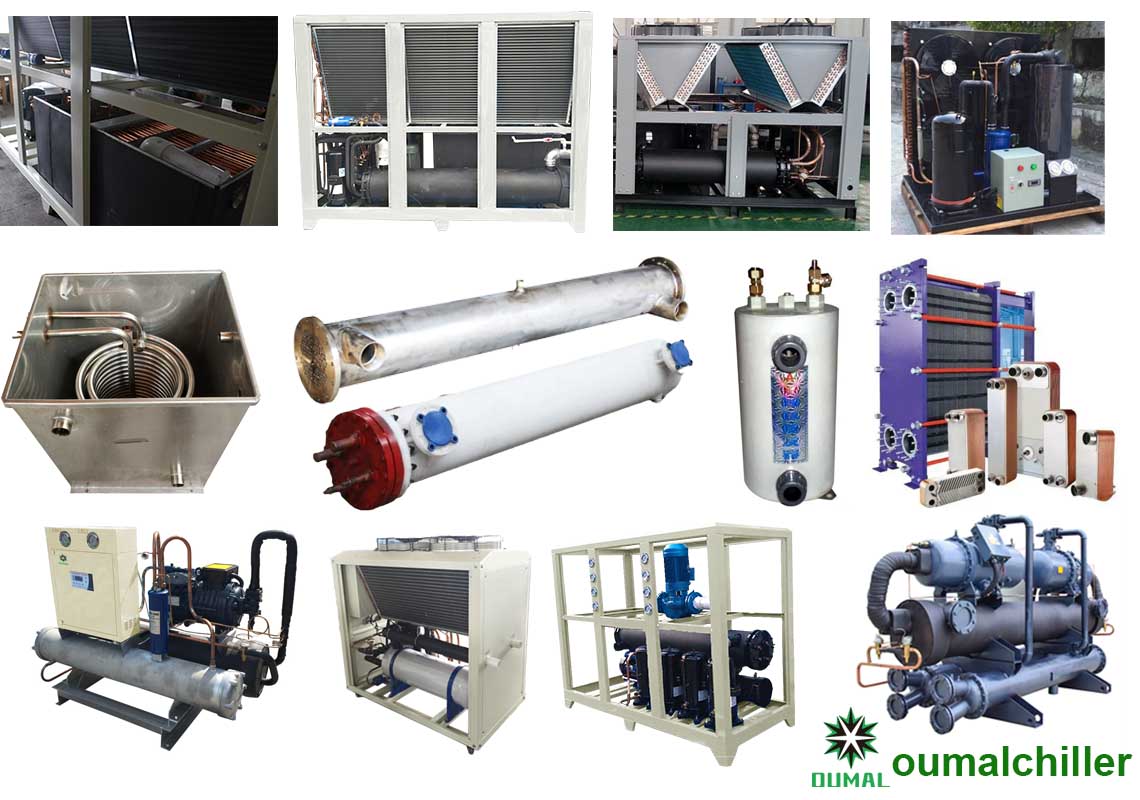The evaporator is one of the main components of industrial chillers. The types of evaporators include: tank with coil evaporator, shell and tube evaporator, stainless steel plate heat exchanger, titanium tube evaporator. With so many types of evaporators, how should we choose the appropriate type of evaporator for our chiller?

Water tank coil evaporator: The evaporator is a coil type structure placed in the water tank. The coil-type evaporator of Omar Refrigeration is made as follows: According to the size of the chiller required by the customer, the copper pipes are coiled in a circle, and then the coil-type evaporator is put into the built-in water tank of the box-type chiller. In this way, the refrigerant in the copper pipe can absorb the heat of the water. The water tank coil evaporator is relatively simple to manufacture. The cost is relatively low. Generally, small water chillers use water tank coil type evaporators.
Shell and tube evaporator: Shell and tube evaporator is the most widely used in screw chillers, and different materials can be selected according to different water quality requirements. For example, the middle tube can be 316 stainless steel or copper tube, or nickel white copper, and the outer shell can be carbon steel or 316 stainless steel. The shell and tube evaporator has compact structure, convenient operation and management, and high heat transfer coefficient. The disadvantage is that the refrigerant charge is large, and when the evaporation temperature is lower than 0 degrees, it is easy to freeze and damage the evaporation tube.
Stainless steel plate heat exchanger: As one of the commonly used heat exchange equipment in heat exchangers, stainless steel plate heat exchangers have certain advantages. They can be used in food, heating, domestic hot water, waste heat recovery and other fields. The data displayed by the heat exchange equipment shows that the stainless steel plate heat exchanger has a better heat exchange effect than carbon steel, and it also prolongs the service life. Stainless steel plate heat exchangers are generally divided into 316L and 304 materials. 304 stainless steel plate heat exchanger has a wide range of uses, such as corrosion resistance, heat resistance, mechanical properties, and low temperature strength. The use temperature can be (-196℃-800℃). When customers of general chillers have requirements for water quality, we will generally equip chillers with stainless steel plate heat exchangers in the choice of evaporator.
Titanium tube evaporator: The titanium tube is light in weight, high in strength, and superior in mechanical properties. When the chiller is used with corrosive liquids, such as acidic liquids, we need to use a titanium tube evaporator. For example, in the electroplating industry, the electroplating solution is highly corrosive. If the chiller directly cools the electroplating solution, a titanium tube evaporator is required. , Titanium tube evaporator is also commonly used in fish pond chillers.
After reading the main features and uses of various evaporators, do you know how to choose the right evaporator type for your chiller? If you don’t know, please contact us and tell us where your chiller is used and the type of liquid that needs to be cooled. Oumal‘s professional engineers will choose the most suitable evaporator for your water chiller systems.
评论
发表评论